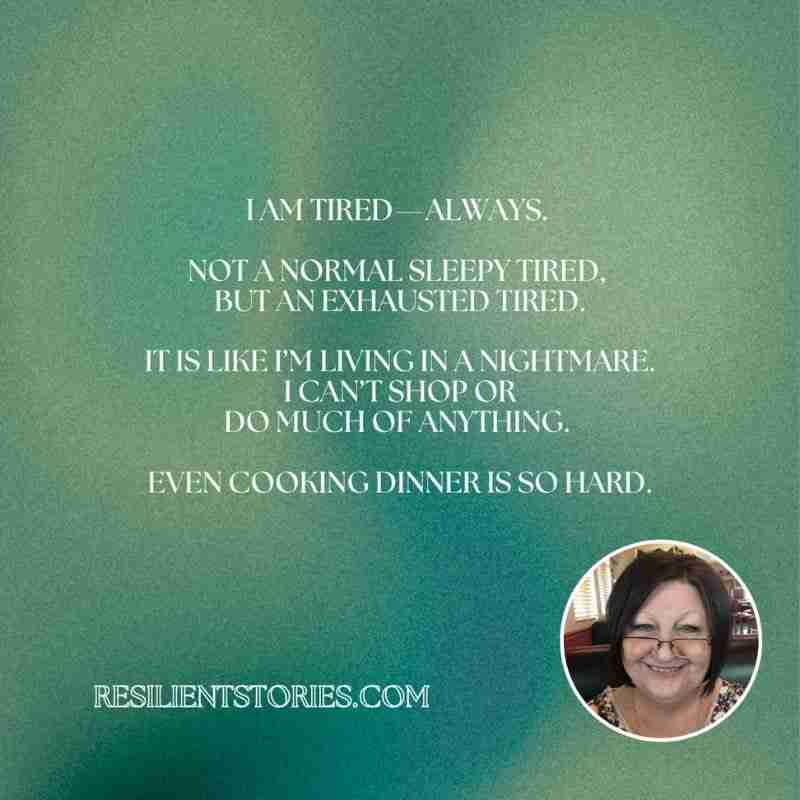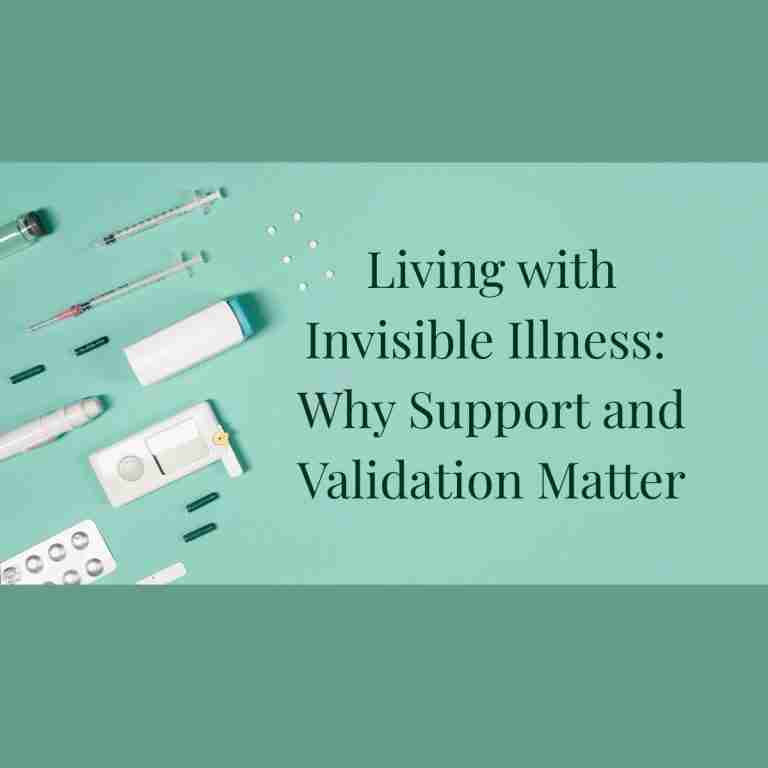Living with Invisible Illness: Visible Support and Validation Matter
Some pain lives deep beneath the surface. It doesn’t show up on X-rays or leave scars behind. But it’s real—and for the millions navigating life with an invisible illness, the lack of visible proof often becomes its own kind of burden.
At Resilient Stories, we know that healing isn’t always linear, obvious, or loud. Sometimes, it’s quiet and unseen. This article explores why invisible illness deserves visible support—and what we can all do to help.
You can see a broken leg. A swollen bruise. The marks left by surgery. These injuries invite sympathy and often immediate offers to help. There’s a shared experience of observable pain.
But something shifts when illness hides beneath the skin and doesn’t show up in bandages or on MRI scans. The world becomes slower to believe, slower to help, and sometimes, unwilling to acknowledge it at all.
This is the daily reality for people living with invisible illnesses. Conditions like fibromyalgia, endometriosis, chronic fatigue syndrome, and autoimmune disorders are considered invisible illnesses and rarely make themselves obvious to the outside world.

Yet their impact can be all-consuming, stripping people of their independence, careers, relationships, and confidence. Many invisible illnesses, such as these, often lead to skepticism and misunderstanding from society, adding to the emotional and social challenges faced by those affected.
And for those who live with these conditions, the hardest battles are often not with their bodies, but with a society that refuses to see.
Living the Unseen Battle: Navigating Chronic Pain and Invisible Illness
Living with chronic conditions like chronic fatigue syndrome and rheumatoid arthritis can profoundly impact a person’s quality of life. These invisible illnesses, which also include autoimmune disorders and mental health disorders, often require ongoing management and treatment. This can be both costly and time-consuming, adding another layer of stress to an already challenging situation.
People with conditions like inflammatory bowel disease and Crohn’s disease frequently experience debilitating pain and fatigue. These symptoms can make it difficult to perform everyday tasks, maintain relationships, and participate in social activities. The diagnostic process for these conditions is often lengthy and challenging, involving multiple tests to reach a conclusive diagnosis.
Healthcare providers play a crucial role in managing chronic conditions. Patients need to find a provider who understands and supports their needs, as this can make a significant difference in their treatment and quality of life. Conditions like multiple sclerosis and fibromyalgia can cause brain fog, joint pain, and other symptoms that affect daily life, making it even more important to have a supportive healthcare team.
Living with a chronic condition means navigating a complex landscape of symptoms, treatments, and emotional challenges. By understanding the impact of these conditions and advocating for better support and accommodations, we can help improve the lives of those affected.

Types of Invisible Disabilities and Chronic Illnesses
Invisible disabilities, including chronic illnesses and mental health disorders, can be just as debilitating as visible disabilities. These conditions, which include autoimmune diseases like lupus and rheumatoid arthritis, as well as cognitive disorders such as dementia and multiple sclerosis, can significantly impact a person’s daily life.
People with invisible disabilities often face challenges in working, attending school, and participating in social activities. They may use assistive devices, such as canes or wheelchairs, to help manage their condition, even though their disability is not immediately apparent. Invisible disabilities can arise from various factors, including genetic predisposition, environmental influences, and other medical conditions.
The medical community is increasingly recognizing the importance of raising awareness about invisible disabilities and providing better support for patients. Scientific research is ongoing to better understand and manage these conditions, leading to the development of new treatments and therapies.
Invisible disabilities can have a profound impact on a person’s quality of life. It is essential to provide support and accommodations to help manage these conditions and improve the overall well-being of those affected. By fostering a greater understanding and awareness of invisible disabilities, we can create a more inclusive and supportive environment for everyone.
The Silent Struggle: When Chronic Pain Is Invisible to Everyone But You
When illness is invisible, doubt creeps in. From strangers, colleagues, sometimes even from friends and family. Some even begin to question themselves. They start downplaying their symptoms, overcompensating, apologising for things beyond their control.
The emotional toll is enormous. Living with pain or fatigue that has no clear, visible source often leads to isolation. You cancel plans because your body won’t cooperate. You miss work because getting out of bed feels impossible.
Co-workers may not understand the severity of your condition, leading to further isolation. You feel unreliable, not because of who you are, but because of what your body has become. This can lead to increased depression, exacerbating the emotional burden.
The isolation is made worse by the feeling misunderstood by most people. Unless they’ve lived it, they cannot grasp what it’s like to exist in a body that defies logic. A body that looks “fine” on the outside while screaming on the inside.

You Don’t Have to Understand Someone’s Pain to Validate It
Support doesn’t fix illness, but it changes the experience of living with a health condition. Just being believed, truly believed, can ease the emotional weight. Knowing that your pain is acknowledged, your limits respected, and your voice heard provides a foundation for healing that no prescription can offer.
This is especially true for those managing various health conditions, where understanding and empathy play a crucial role.
This is why visible support matters. It’s why employers must go beyond written policies and actually listen when a patient discloses a condition. Or why friends need to check in even when plans are cancelled again.
It’s why family members must understand that good days are not signs of recovery, but brief glimpses of normality in a life otherwise altered.
Support needs to be loud. Unapologetic. Public. Because too often, people with invisible illnesses are made to feel invisible themselves.
The Spoon Theory and Self-Care When You Have an Invisible Illness
The spoon theory, developed by Christine Miserandino, offers a powerful way to explain the limited energy and resources available to people with invisible illnesses. According to the theory, individuals with these conditions have a limited number of “spoons” to spend on daily activities.
Once a spoon is used, it’s gone, making it crucial to manage their energy carefully.
Self-care is essential for people with invisible illnesses. This includes getting enough rest, eating a healthy diet, and engaging in stress-reducing activities.
By prioritizing their activities and focusing on what is most important, individuals can use the spoon theory to help manage their energy and avoid overexertion.

The spoon theory can also help others understand the challenges faced by people with invisible illnesses. It illustrates the difficulty of managing daily tasks and maintaining relationships when energy is limited.
By fostering this understanding, we can create a more supportive environment for those affected.
Self-care practices can help people with invisible illnesses manage their symptoms and improve their quality of life. Finding a balance between rest and activity is crucial, as overexertion can exacerbate symptoms and worsen the condition.
By embracing the spoon theory and prioritizing self-care, individuals with invisible illnesses can take control of their condition and enhance their overall well-being.
Advocating for Change, Legally and Socially
Beyond the personal, there is a need for structural change, too. Medical professionals must learn to listen without bias. The AMA Journal has highlighted the importance of recognizing and validating the legitimacy of these diagnoses in the medical community.
Benefits systems must stop treating invisible illness as invisible need and acknowledge the legitimacy of these diagnoses. Workplaces must evolve from performative inclusivity to genuine accommodation.
The difficulties faced by individuals with invisible illnesses in obtaining a proper diagnosis must be addressed to create a more supportive environment.
And in cases where an invisible illness was triggered or worsened by an accident or negligence, such as a road traffic incident or workplace injury, legal advocacy becomes essential. A chronic pain lawyer who understands these conditions can fight for the recognition and resources that sufferers deserve.
They know how invisible illnesses operate and how to make the invisible, visible. At least within a courtroom.

A Call for Compassion
Invisible illness asks something simple, but profound: to see the person. It is not weakness, nor exaggeration, nor a cry for attention. It is a real, life-altering experience carried in silence by millions. These conditions can cause significant physical challenges, even if they are not outwardly visible.
So when someone says they are sick and in pain, believe them. When they say they’re tired, listen. When they need to cancel plans or rest more than you think they should, trust that they are doing their best.
Compassion is free, but its impact is priceless. And in a world that often overlooks those who suffer quietly, making support visible can be an act of radical empathy.
It sends a message that says: you are not invisible, and you do not have to fight alone.
Have you dealt with chronic pain or an invisible illness? Let us know in the comment section below.









